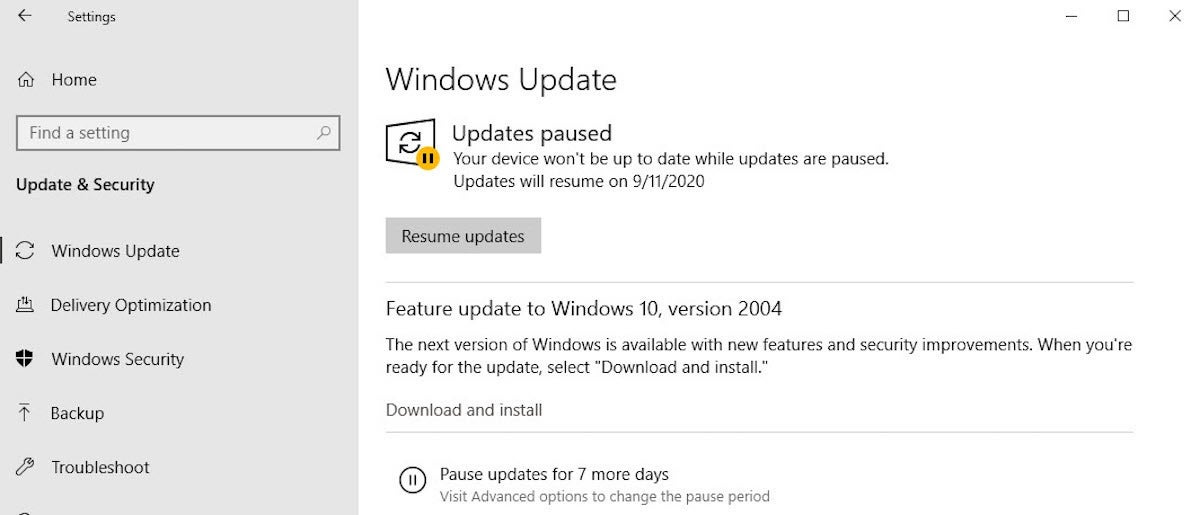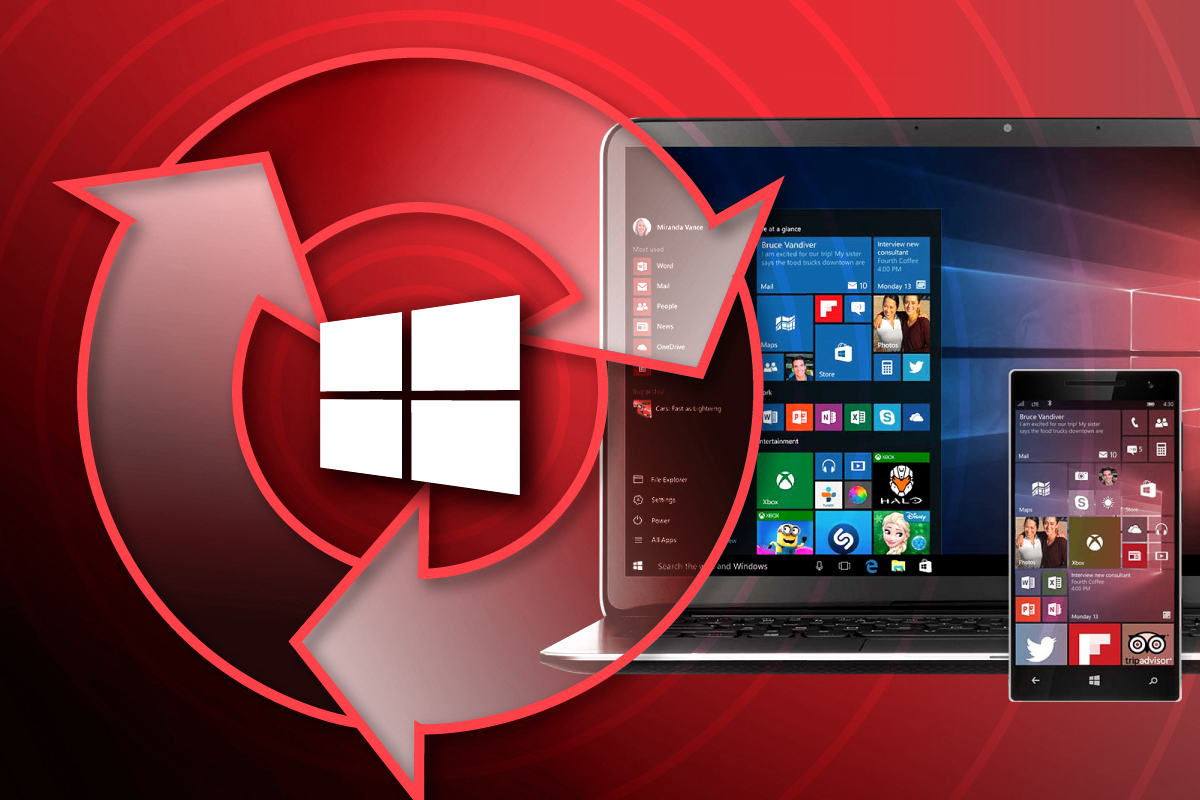There are a few odd problems with the latest Microsoft patches, but they’re sporadic and reasonably-well understood. Go get the outstanding updates installed now, but avoid “optional” patches.
It looks like we’re good to go with Microsoft’s August Windows and Office patches. The second cumulative update for Windows 8.1, KB 4578013, throws some Virtual Private Networks out of kilter, and the Win7 patches may knock out your printers (for those of you paying for Win7 Extended Security Updates). But most of the other bugs appear to be squashed.
And there’s a bit of good news on the horizon: It looks like Microsoft is finally, finally hunting down the swarm of bugs in its latest Windows release, version 2004. Even the (undocumented) “Optimize Drives” bug that triggered incessant SSD defrags has been addressed – albeit in an optional, non-security, C/D Week patch that appeared in “E Week.”
In my opinion, Windows 10 version 2004 still isn’t ready for prime time. But it’s getting close. If the latest bounty of 70-plus identified bug fixes goes in without breaking too many machines, version 2004 might actually stabilize by late this month.
But don’t hold your breath. And don’t install 2004 until we’ve seen the results from the unpaid beta testers.
Here’s how to get caught up.
Make a full backup
As always, do a full system image backup before you install the latest patches.
There’s a non-zero chance that the patches — even the latest, greatest patches of patches of patches — could hose your machine. So it’s best to have a backup that you can reinstall even if your machine refuses to boot. (This is in addition to the usual need for System Restore points.)
There are plenty of full-image backup products, including at least two good free ones: Macrium Reflect Free and EaseUS Todo Backup.
Install the latest Win10 August Cumulative Update
If you haven’t yet moved to Win10 version 1909 (in the Windows search box type winver and hit Enter), I recommend you do so. The bugs in version 1903 are largely replicated in 1909 and vice-versa, so there’s very little reason to hold off on making the switch – although, admittedly, there’s almost nothing worthwhile that’s new in version 1909. I have detailed instructions for moving to 1909 here.
If you’re running Win10 version 2004 – 25% of all Win10 users are already there – you’re on the bleeding edge. Please keep us apprised of any problems on AskWoody.
To get the latest August Cumulative Update installed, click Start > Settings > Update & Security. If you see a Resume updates box (see screenshot), click on it.
 Microsoft
MicrosoftThat’s all you need to do. Windows, in its infinite wisdom, will install the August Cumulative Update at its own pace. If you don’t see a Resume updates box, you already have the August Cumulative update and you’re good to go.
If you see an offer to Download and install the “Feature update to Windows 10, version 2004,” which you can see in the preceding screenshot, ignore it. Studiously.
If you see a link to View optional updates, ignore it, too. There are no optional updates available at this point that you want to wrangle with. Let the cannon fodder be cannon fodder.
Windows Update in version 2004 is having a bit of an identity crisis. If you’re already running 2004, just avoid the optional updates until the drama has subsided and Windows Update settles down a bit.
Win10 problems you may hit, and how to handle them
When your machine comes back up for air, don’t panic if your desktop doesn’t look right, or you can’t log in to your usual account. You’ve liekly been bit by the “temporary profile” bug, which we’ve known about – and complained about – for months. Try restarting your machine four or five times, the bug may go away. We have three separate threads on AskWoody about solving the problem [1, 2, 3] and if you need additional help, you can always post a question. (Thx @PKCano.)
While you’re mucking about with Windows Update, it wouldn’t hurt to Pause updates, to take you out of the direct line of fire the next time Microsoft releases a buggy bunch of patches. Click Start > Settings > Update & Security. Click “Pause updates for 7 days.” Next, click on the newly revealed link, which says “Pause updates for 7 more days,” four more times. That pauses all updates for 35 days, until early October.
With a little luck that’ll be long enough for Microsoft to fix any bugs it introduces in August, so you can skip the angst.
Patch Win7, Win8.1, or associated servers
If you’ve paid for Win7 Extended Security Updates and you’re having trouble getting them installed, Microsoft has an article called Troubleshoot issues in Extended Security Updates that may be of help. We’re also fielding questions on AskWoody.
If you’ve paid Microsoft for Extended Security Updates and can’t get them to install, make sure you follow all of the steps at the bottom of KB 4571729, the August Monthly Rollup Knowledge Base article. In particular, you need to install all outstanding updates, then get the Servicing Stack Update installed (expect a new Servicing Stack every month), before the August patch will appear. There’s a new Servicing Stack Update, but it now appears as if you won’t need it until the November patches roll out.
Windows 8.1 continues to be the most stable version of Windows around. To get this month’s puny Monthly Rollup installed, follow AKB 2000004: How to apply the Win7 and 8.1 Monthly Rollups. You should have one Windows patch, dated Aug. 11 (the Patch Tuesday patch). No, you don’t want the Preview of Monthly Rollup. And you should similarly ignore the manual-install-only second cumulative update, KB 4578013.
After you’ve installed the latest Monthly Rollup, if you’re intent on minimizing Microsoft’s snooping, run through the steps in AKB 2000007: Turning off the worst Win7 and 8.1 snooping. If you want to thoroughly cut out the telemetry, see @abbodi86’s detailed instructions in AKB 2000012: How To Neutralize Telemetry and Sustain Windows 7 and 8.1 Monthly Rollup Model.
Whether you’ve paid for Extended Security Updates or not, if you connect to Windows Update in Win7 or Win8.1, Microsoft’s going to push its latest, greatest version of the Chrome-based Edge browser onto your machine. The new Microsoft Edge icon (which is a surly-swirly version of the old one) shows up on the taskbar. Internet Explorer is still there, but you have one more browsing choice.
No, Microsoft isn’t giving away free security patches for Win7. But they’re sure giving away free Chrom-edges.
This article originally appeared on ComputerWorld.

